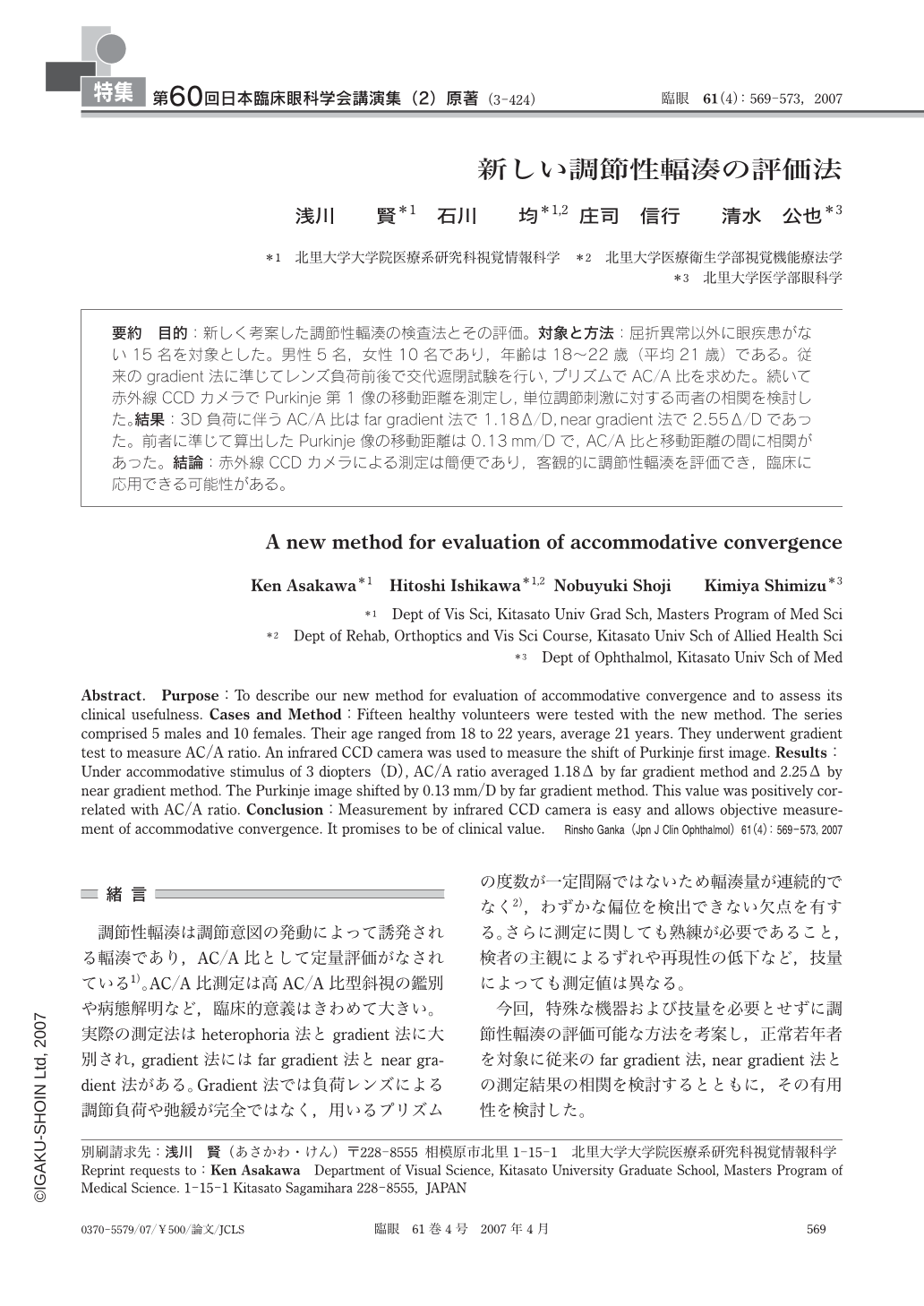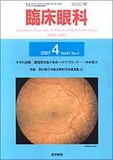Japanese
English
- 有料閲覧
- Abstract 文献概要
- 1ページ目 Look Inside
- 参考文献 Reference
要約 目的:新しく考案した調節性輻湊の検査法とその評価。対象と方法:屈折異常以外に眼疾患がない15名を対象とした。男性5名,女性10名であり,年齢は18~22歳(平均21歳)である。従来のgradient法に準じてレンズ負荷前後で交代遮閉試験を行い,プリズムでAC/A比を求めた。続いて赤外線CCDカメラでPurkinje第1像の移動距離を測定し,単位調節刺激に対する両者の相関を検討した。結果:3D負荷に伴うAC/A比はfar gradient法で1.18Δ/D,near gradient法で2.55Δ/Dであった。前者に準じて算出したPurkinje像の移動距離は0.13mm/Dで,AC/A比と移動距離の間に相関があった。結論:赤外線CCDカメラによる測定は簡便であり,客観的に調節性輻湊を評価でき,臨床に応用できる可能性がある。
Abstract. Purpose:To describe our new method for evaluation of accommodative convergence and to assess its clinical usefulness. Cases and Method:Fifteen healthy volunteers were tested with the new method. The series comprised 5 males and 10 females. Their age ranged from 18 to 22 years, average 21 years. They underwent gradient test to measure AC/A ratio. An infrared CCD camera was used to measure the shift of Purkinje first image. Results:Under accommodative stimulus of 3 diopters(D), AC/A ratio averaged 1.18Δ by far gradient method and 2.25Δ by near gradient method. The Purkinje image shifted by 0.13mm/D by far gradient method. This value was positively correlated with AC/A ratio. Conclusion:Measurement by infrared CCD camera is easy and allows objective measurement of accommodative convergence. It promises to be of clinical value.

Copyright © 2007, Igaku-Shoin Ltd. All rights reserved.


